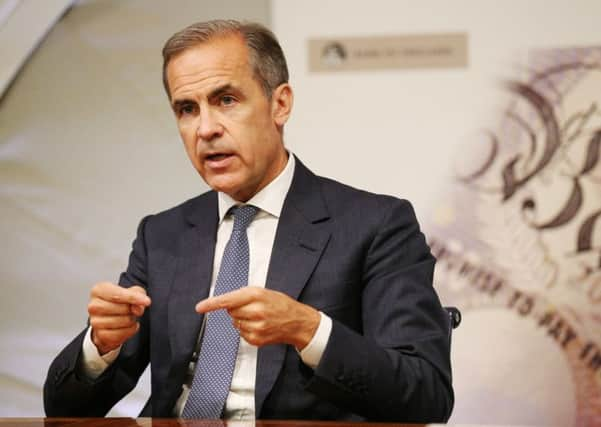Banks told to put aside extra £11bn amid borrowing fears
This article contains affiliate links. We may earn a small commission on items purchased through this article, but that does not affect our editorial judgement.


The crackdown came as the Bank said in its latest twice-yearly financial stability report that the economy, which has been slowing as inflation has outpaced earnings growth, faced a “wide range” of risks.
The Bank raised fears over surging levels of unsecured consumer borrowing on credit cards and car finance, which have leapt by 10 per cent and 15 per cent respectively.
• READ MORE: Markets and economy news
Advertisement
Hide AdAdvertisement
Hide AdIt announced plans that will see banks have to build up their capital cushions by £5.7bn initially, and indicated that it will probably double that in November 2018.
The Bank also said it will tighten affordability tests for mortgage lending, amid concerns that the banking sector – about 10 per cent of UK GDP – has become too reliant on relatively “benign” economic conditions.
It said the financial policy committee (FPC), headed by Bank governor Mark Carney, was continuing to work on contingency planning for a “range of possible outcomes” of Brexit negotiations.
• READ MORE: BoE chief economist may support interest rate hike
These will help “mitigate the risks to financial stability as the withdrawal process unfolds”, it said. The FPC’s remit is to monitor systemic risk, credit bubbles and economic growth.
The Bank added: “Lending conditions in the mortgage market are becoming easier. Lenders may be placing undue weight on the recent performance of loans in benign conditions.”
Threadneedle Street is to increase the so-called counter-cyclical buffer for banks – the “rainy day” money for banks – from the present 0 per cent to 0.5 per cent initially, and then again to 1 per cent in November, if the wider economy remains stable. The banks will have 18 months to meet the increased limit.
Advertisement
Hide AdAdvertisement
Hide AdYesterday’s move sees the Bank scrap an emergency policy brought in after last June’s Brexit vote, when the buffer rate was cut to zero, which allowed banks to release reserves to help avert the threat of recession.
The economy has since proved surprisingly resilient, although growth slowed sharply to 0.2 per cent in the first quarter of 2017.
Other actions outlined by the Bank yesterday include plans to bring forward from November to September stress testing on banks’ balance sheets for losses on consumer credit lending.
• READ MORE: Holiday costs push inflation towards four-year high
It will also tighten up affordability tests for mortgage lending, ensuring borrowers can meet repayments in the event that interest rates jump to about 7 per cent.
Earlier this month a divergence on interest rate policy was highlighted in the monetary policy committee, when three of the eight members voted for a rise in rates to 0.5 per cent due to soaring inflation. This marked the biggest hawkish show of dissent since 2011.